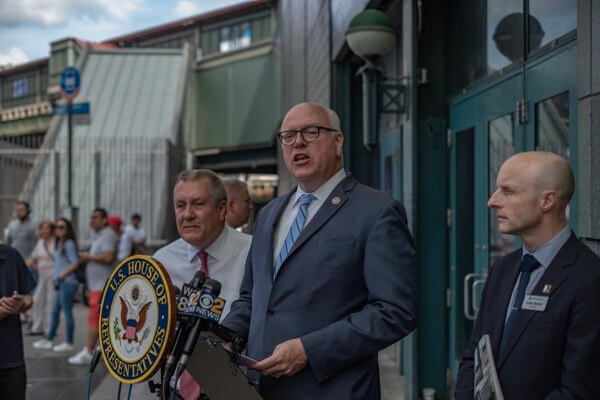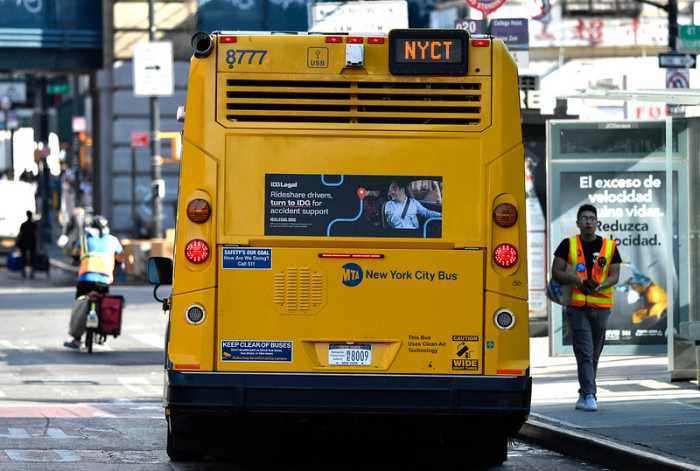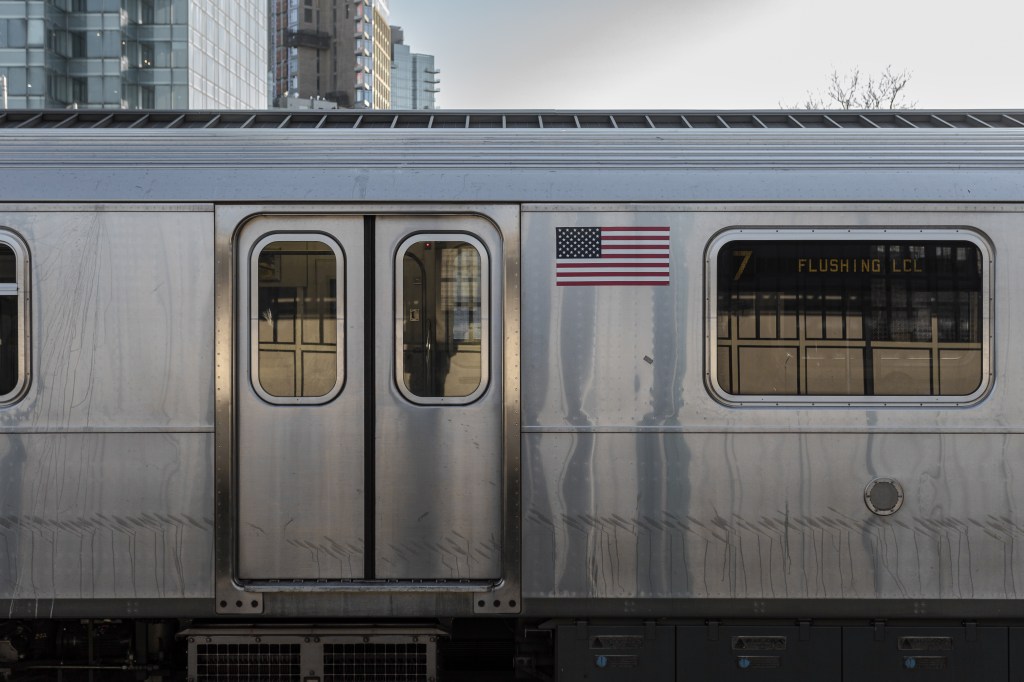By Mark Hallum
In two years time, residents living under the elevated track of the No. 7 train may no longer have to worry about lead particles imperiling their own health and the well-being of their families.
New York City Transit President Andy Byford announced Tuesday a $45 million plan to strip the elevated trestle of the No. 7 train down to bare steel, make structural repairs and remediate the lead issue revealed in early 2017.
The first phase of the project will run from 82nd Street and Citi Field, according to Byford.
“This is a project that we’ve needed to do for some time. It’s not easy because we’re talking about elevated structures that have decades of lead paint on them, decades of dust and dirt, and this needs to be very carefully cleaned off,” Byford said, explaining that a specialist union contractor would take responsibility for the task removing miles of lead-based paint.
“It’s not just a repainting, we’re actually going to be doing some pretty substantial structural repairs at the same time, and this will see this critical structure for the 7 line — this critical structure within the wonderful borough of Queens — this will see that stricture made good and cared for decades to come,” he added.
Joining Byford at the Tuesday news conference in front of the 74th Street – Jackson Heights station was U.S. Rep. Joseph Crowley (D-Jackson Heights) and City Councilman Daniel Dromm (D-Jackson Heights).
“For years our community has sought to address the lead paint peeling from the 7 line tracks which pose a severe health risk to our families,” Crowley said. “The project we’re announcing today will prioritize addressing this health risk. I just want to say as well, I think aside from the health risk, there’s also an aesthetic issue here as well… We’re proud of the 7 line and what it has done to accomplish for the people of our borough and our city, but it needs love and care and attention, and for too long it’s been neglected.”
A report published by the District 9 International Union of Painters and Allied Trades in early 2017 showed the paint on the No. 7 tracks contained 224,000 parts per million of lead paint, more than 40 times the 5,000 parts per million legal threshold.
“It’s been years of neglect that we have had to endure here in this community,” Dromm said, indicating the appearance as well as the health risks associated with the trestle. “We have worked with a whole host of people within this community to make this happen and finally it is becoming a reality.”
State Sen. Jose Peralta (D-East Elmhurst) passed legislation signed by Gov. Andrew Cuomo in December 2017 requiring the MTA to address the issue as part of any work that takes place on the tracks.
The repainting project begins in July and has a two-year completion date that will bring the tracks one step closer to modernization alongside the installation of communication-base train control, the digital technology slated to replace the current analog system with components dating back to the construction of the track in 1917.
CBTC has shown the ability to increase service on train lines by about 30 to 36 trains per hour depending on the number of available trains and storage capacity, according to Byford.
Three coats of paint will be applied that Byford claimed would last decades and the work will take place in phases along different lengths of track to limit the impact on commuters.
Crowley repeated the phrase a couple times during the news conference “short-term pain, long-term gain,” indicating that commuter should brace for limited service during the two-year work period.
Reach reporter Mark Hallum by e-mail at mhall




































